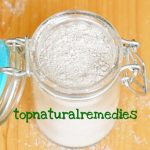Willow – Natural Aspirin for Heart and Bones
White willow (Salix alba), also known as “natural aspirin”, has been used for therapeutic purposes for more than 1.000 years, due to its proved health benefits. Willow has a specific flavor that reveals its natural soothing effect.

Willow – The Best Treatment for Cardiac Patients
Willow treats cardiovascular diseases, eliminates stress and prevents headaches and joint pains. The plant is also effective in treating ophthalmological disorders. Regarding its benefits for those suffering from heart diseases, it should be mentioned that willow bark has a vasodilator effect and reduces high blood pressure. Due to its antioxidant content, willow protects the blood vessels against the formation of fat deposits and cholesterol.
How to Prepare “Natural Aspirin”
The treatment for those suffering from heart diseases consists in the administration of willow bark powder, and that it the “natural aspirin”, rich in salicina. When it gets into the body, salicina becomes salicylic acid. Unlike synthetic aspirin, the willow bark powder doesn’t have any side effect.
Willow bark is only collected from young branches when the first leaves haven’t come up yet and the bark detaches easily from the trunk. After you have collected the bark, you must cut it in small pieces and let it dry in an airy and dry place for 2 weeks. You can bend the small bark pieces to see if they are dry enough. If they are brittle and break easily, it means that they are dry enough. Pack them in paper bags.
The powder is obtained by grinding the willow bark in the coffee grinder. It is better to prepare the powder in small amounts because freshly ground powder has maximum efficiency. If you have some remaining powder, keep it in small glass jars, hermetically closed.
Administration
Take 1 teaspoon of the powder twice a day. Keep the powder under your tongue and then swallow it. Also, you can dilute it with water, tea or stewed fruit. The willow treatment for cardiovascular diseases lasts 2 weeks and after a one-month break, you can continue the treatment, but no more than 4 times per year.



